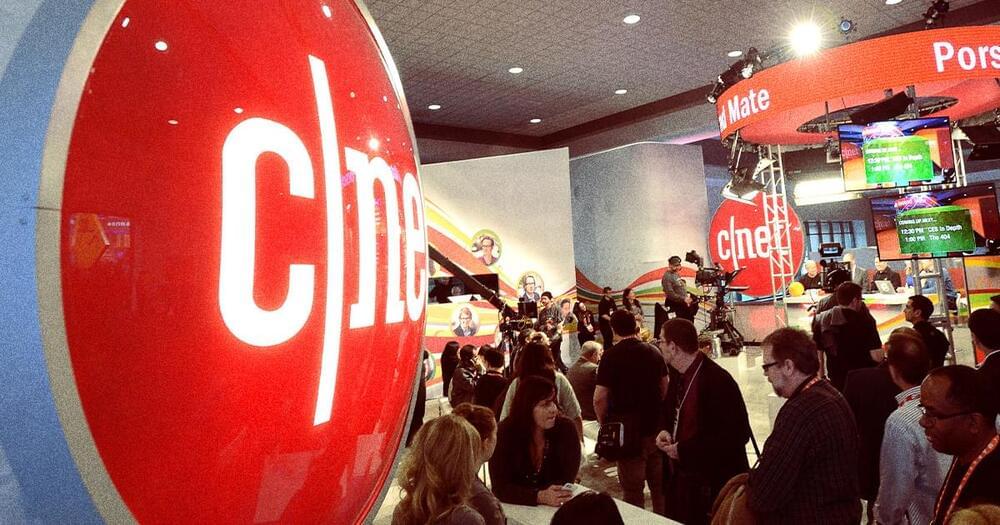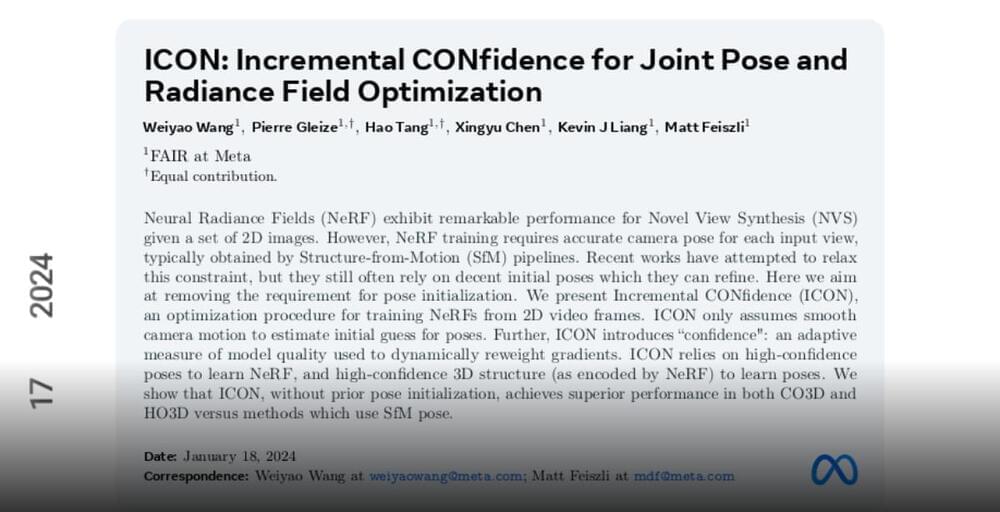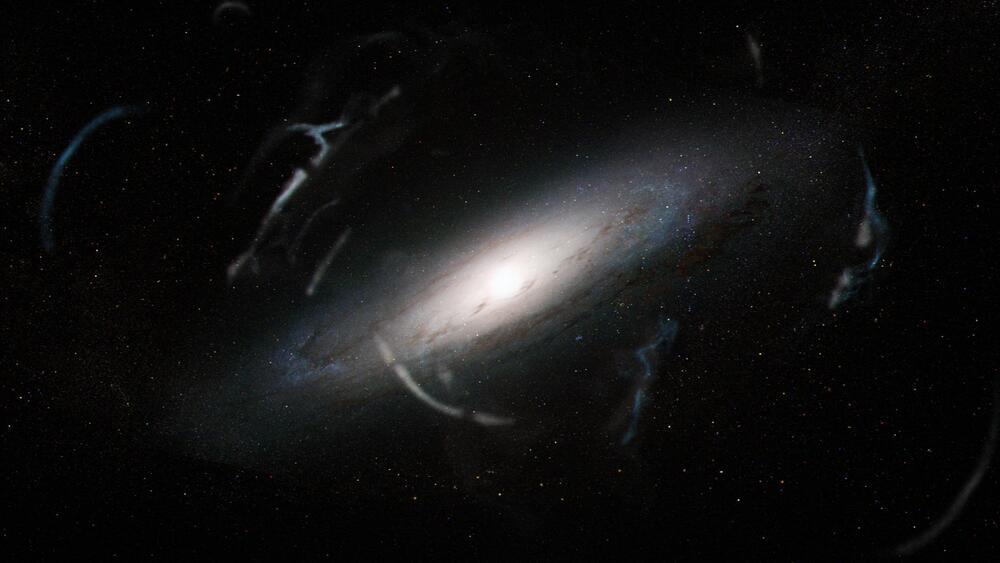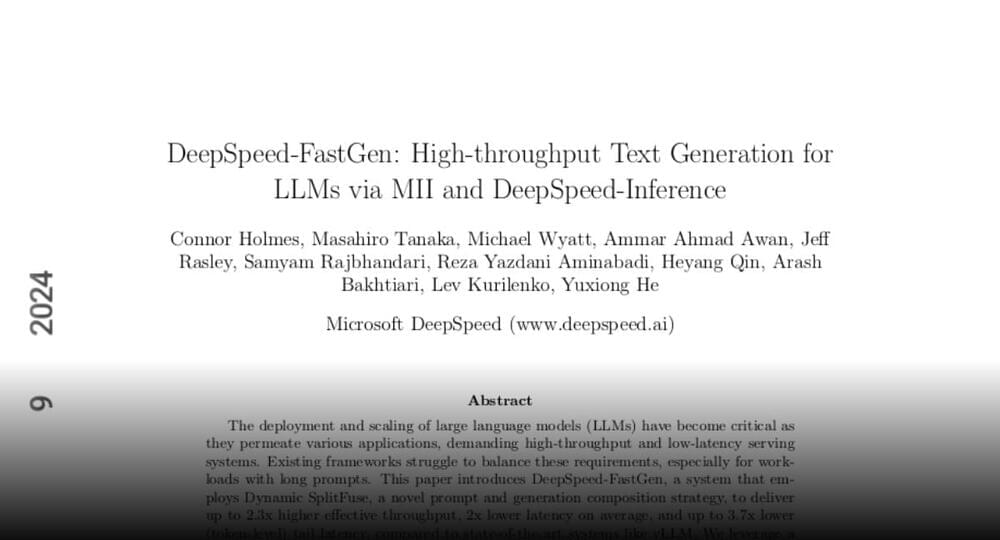Dr. Joan Mannick presents the best validated therapeutic to extend lifespan in this video. Dr. Joan Mannick is the Chief Executive Officer and Co-Founder of T…
Get the latest international news and world events from around the world.
Vision Mamba BEATS Transformers!!!
Nice to see successes in deep learning moving beyond transformers. This one is more accurate and scales much better without ridiculous memory requirements.

Dead Teslas pack Chicago area Supercharger station due to frigid temps
Something to consider for cold weather areas like I live in.
A lot of EV owners were stuck in a parking lot due to charging woes.
Watch FOX 32 Chicago Live: https://www.fox32chicago.com/live.
FOX 32 Chicago delivers breaking news, live events, investigations, politics, entertainment, business news and local stories from Chicago and across the nation.
Watch more FOX 32 Chicago on YouTube:
This New Nuclear Battery Could Soon Go On the Market
They’re working on it.
A Chinese company has announced they’re planning to mass-produce tiny nuclear batteries that can last up to 50 years, possibly beating both a British and an American company who have tried to put those on the market for several years. What does that mean? Will we soon all power our phones with nuclear power? Let’s have a look.
🤓 Check out our new quiz app ➜ http://quizwithit.com/
💌 Support us on Donatebox ➜ https://donorbox.org/swtg.
📝 Transcripts and written news on Substack ➜ https://sciencewtg.substack.com/
👉 Transcript with links to references on Patreon ➜ / sabine.
📩 Free weekly science newsletter ➜ https://sabinehossenfelder.com/newsle…
👂 Audio only podcast ➜ https://open.spotify.com/show/0MkNfXl…
🔗 Join this channel to get access to perks ➜
/ @sabinehossenfelder.
🖼️ On instagram ➜ / sciencewtg.


NASA’s Roman to Search for Signs of Dark Matter Clumps
Some of the finest, smallest details in the universe – the gaps between elongated groups of stars – may soon help astronomers reveal dark matter in greater detail than ever before. After NASA’s Nancy Grace Roman Space Telescope launches, by May 2027, researchers will use its images to explore what exists between looping tendrils of stars that are pulled from globular clusters. Specifically, they will focus on the tidal streams from globular clusters that orbit our neighboring Andromeda galaxy. Their aim is to pinpoint a greater number of examples of these tidal streams, examine gaps between the stars, and ideally determine concrete properties of dark matter.
Globular cluster streams are like ribbons fluttering in the cosmos, both leading and trailing the globular clusters where they originated along their orbits. Their lengths in our Milky Way galaxy vary wildly. Very short stellar streams are relatively young, while those that completely wrap around a galaxy may be almost as old as the universe. A stream that is fully wrapped around the Andromeda galaxy could be more than 300,000 light-years long but less than 3,000 light-years wide.
With Roman, astronomers will be able to search nearby galaxies for globular cluster stellar streams for the first time. Roman’s Wide Field Instrument has 18 detectors that will produce images 200 times the size of the Hubble Space Telescope’s near-infrared camera – at a slightly greater resolution.

Researchers find evidence of long-lived valley states in bilayer graphene quantum dots
In quantum computing, the question as to what physical system and which degrees of freedom within that system may be used to encode quantum bits of information—qubits, in short—is at the heart of many research projects carried out in physics and engineering laboratories.
Superconducting qubits, spin qubits, and qubits encoded in the motion of trapped ions are already widely recognized as prime candidates for future practical applications of quantum computers; other systems need to be better understood and thus offer a stimulating ground for fundamental investigation.
Rebekka Garreis, Chuyao Tong, Wister Huang, and their colleagues in the group of Professors Klaus Ensslin and Thomas Ihn from the Department of Physics at ETH Zurich have been looking into bilayer graphene (BLG) quantum dots, known as a potential platform for spin qubits, to find out if another degree of freedom of BLG can be used to encode quantum information.

